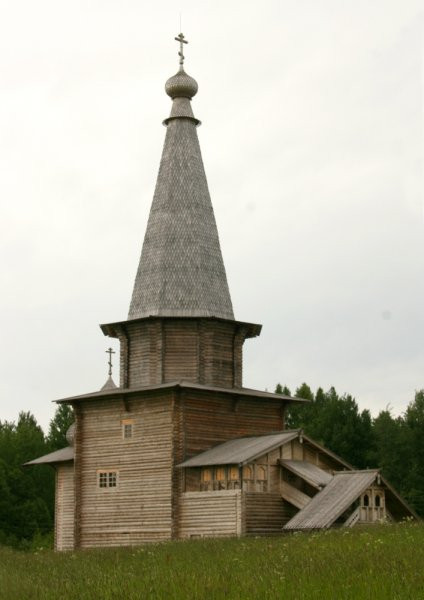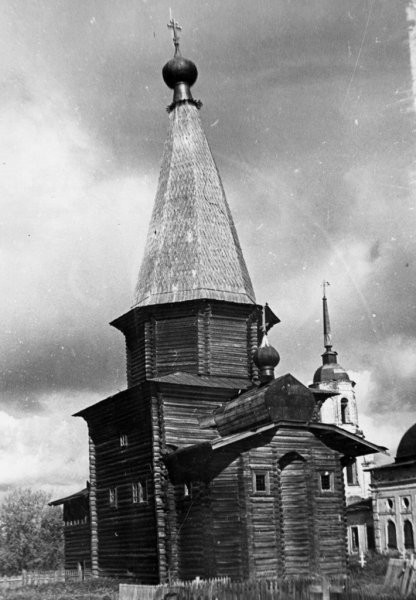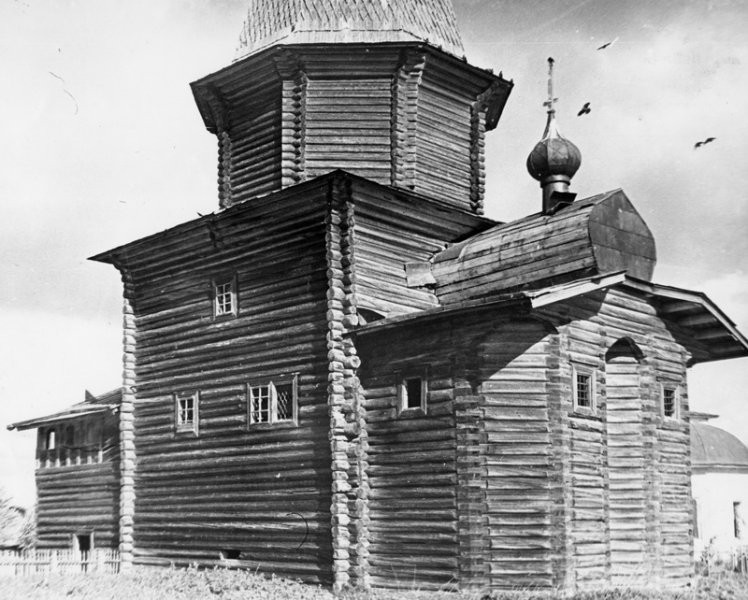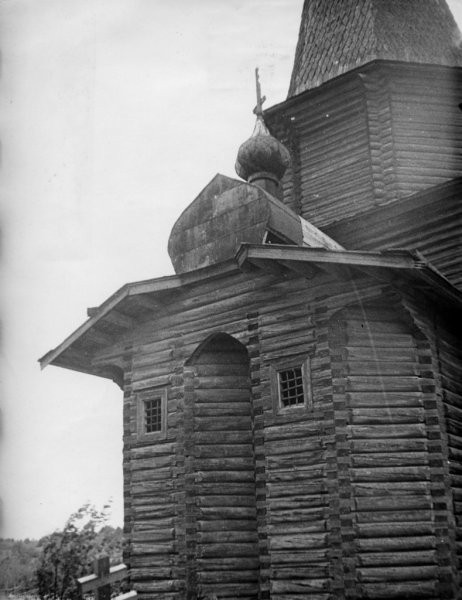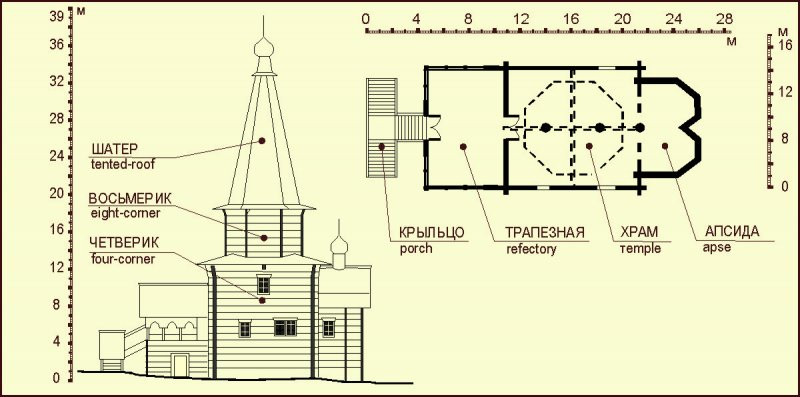St. George church
St. George Church
the late XVIIth century
from the village Potsky Pogost, Verkhovsky area, Tarnoga district.
A cold steeple wooden St. George Church was built in the late 17th – early 18th centuries in “place of the old wooden church built in 1588” upstream the Uftyuga River.
Consecrated in 1700, St. George Church has two altars. The southern altar is named in the honor of St. Boris and St. Gleb, while the northern one is in the honor of St. George.
The issue of transferring the church to the museum was outlined in 1982at the stage of the master plan design. For a number of reasons, despite availability of the full set of project documentation and carried out anti-damage works, dismantling and transferring of the memorial had not been timely implemented. Only in the summer of 1993, after the collapse of the church top, a resolution to disassembly the remaining parts of the memorial and transfer them to the museum had been adopted.
St. George Church has a traditional for the 18th century church architecture structure with a three-part composition of the scheme with extension along the longitude axis. The church is a one-floor construction on a high ground floor (3.6m) with a tent roof. The church has a quadrangle on an octagonal base structure with a tent-shaped roof (dimensions of the church are 9.9 x 9.9m). The height of the quadrangle amounts to 10.7m and of the octagonal base to 5.5m; the tented roof is 15.3m high, the dome with the cross is 6.6m high. A two-part apse is attached to the eastern side of the church (4.9 x 8.5m in plan; the log structure is 6.8m high). A small refectory (church porch) is attached to the western part of the church.
A big porch with double stairs and a locker roof is attached to the western side of the refectory. Its fencing constructions and the roof are richly ornamented which adds to the laconic decoration of the church façades.
Project author: Architect S.V. Gelfer
The restoration project included full rebuilding of the memorial after its transfer to the museum. The erection drawings provided for remake of the missing elements of the interiors and the porch. The design proposed to restore the original granary with barrels in the ground floor. The iconostasis design has never been developed.

